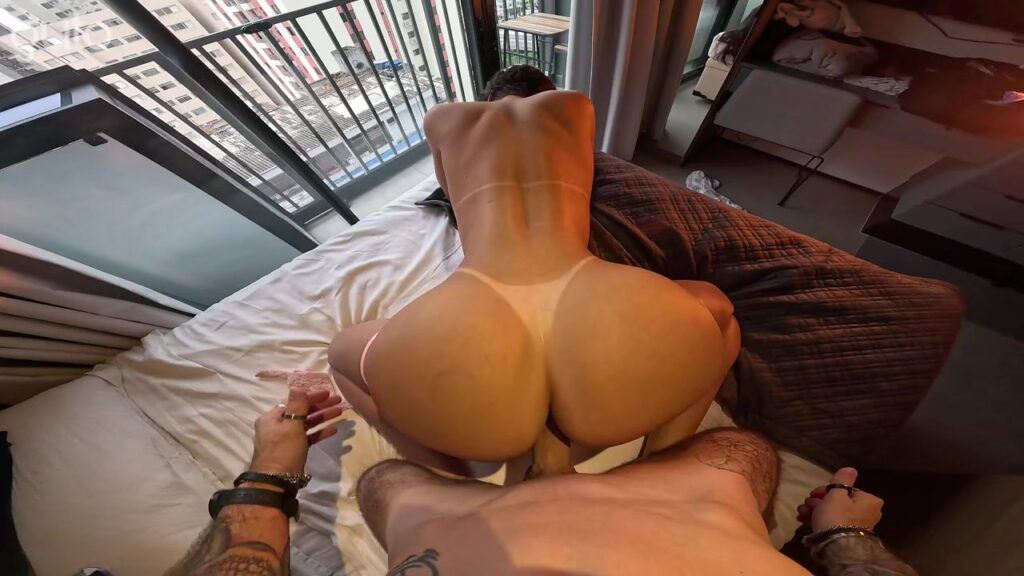Inside Your Own Eyes: The Psychology of Why POV Clips Hook the Brain

Open a tab and the frame changes more than the content. You are no longer watching a scene; you are standing inside it. That is the quiet magic of POV: it recruits the oldest systems in your nervous system and convinces them that the glass is skin, the microphone is breath, the room is yours. This is not a gimmick layered on top of adult media; it is the operating system beneath it. The best curators lean into that immediacy without smothering it – catalogs that respect pacing, leave in small talk, and point the lens where attention actually goes. If you want a working reference point for how that curation looks on a modern platform, a clean doorway is Mod Porn POV – not a finish line, but a live index of how first-person angles turn viewers from spectators into co-authors.
Part of the appeal reads instantly, even to skeptics. The first-person frame trims away the self-consciousness of being seen, replacing it with the feeling of seeing. That shift turns a session into a memory-in-progress. Titles become invitations; a glance becomes a map; a shaky breath is proof that the moment actually happened. It is the same reason home videos move us more than stock footage: the camera is complicit, not detached. Even a simple phrase like caught in the moment lands differently through this glass, because the sensation is not performance at you, but proximity with you.
Your Brain On First-Person: Presence, Ownership, and Why Small Details Matter
Psychology has a word for the sensation POV evokes when it lands: presence. Presence is not an aesthetic; it is a measurable shift in how your brain treats the scene – less like watching, more like being there. Studies in virtual environments show a consistent pattern: first-person perspective intensifies the felt sense of “being in the room,” heightening emotional response and attention. That boost in presence has been linked to stronger awe responses and more vivid subjective experience compared with third-person views. Put bluntly, when the frame becomes your eyes, the body leans forward.
Presence sets the table, but another process serves the meal: body ownership. In labs, when people see limbs from a first-person angle while receiving matching touch, they often experience the “this is me” illusion – even when the body is virtual. The more the senses align with the view, the more the brain assigns the event to the self. POV filming piggybacks on that mechanism. Eye-line congruence, hand placement that matches expected angles, audio that comes from where your ears think it should – each tiny congruence strengthens the identification loop. That is why a camera tilt at the wrong time can snap you out of it, and why a correctly timed nod can lock you back in.
The soundscape does more than wallpaper the room. Small, local sounds – fabric moving, a half-laugh, a whispered check-in – are not decoration; they are anchors. In presence research, diegetic sound (noise that could actually exist in the space) increases the sense of location. POV thrives on those anchors. Over-scoring bulldozes them; room tone protects them. That is why the most replayed seconds are not always the loudest beats. They are the micro-signals of consent and attention: “Okay?” “Here?” “Like this?” Those verbal breadcrumbs tell the nervous system it is safe to stay. When safety is legible, arousal can afford to be curious.
Vision adds its own texture rules. First-person does not demand ultra-gloss; it demands coherence. A lens that approximates human field of view, a depth of field that feels natural, a grade that leaves skin looking like skin – these decisions cue credibility. The frame wins when it respects where a person would actually look: faces, hands, orientation checks, re-establishing the room. Editors who cut on reaction rather than purely on action exploit a deeper truth from cognitive science: our minds use other people’s faces to regulate our own states. A POV cut that lands on a satisfied exhale is worth a dozen stunt angles because it models the feeling the viewer is there to catch.
The paradox, proven over and over in immersion studies, is that more “being there” does not automatically mean more memory afterward; presence can actually trade off with later recall. In practice, that makes POV sticky in the moment and soothing on replay. You are not building a lecture; you are indulging a mood – one that feels like it happened to you, even if some details blur later. The feeling is the souvenir.
For readers who want a reputable, non-Wikipedia primer on how first-person media manipulates attention and presence, the Stanford Virtual Human Interaction Lab aggregates decades of peer-reviewed work on perspective, embodiment, and immersion. Their public overviews are a solid bridge between lab effect and lived experience.
Why POV Beats “Production”: Trust, Consent, and the Contract In The Frame
Ask viewers what they like about POV and they rarely say “the gear.” They talk about the feel – directness, lack of pretense, intimacy that does not require a roomful of strangers to orchestrate. Underneath those answers is a contract that the camera makes visible. The first clause is agency. When the lens stands in for your eyes, any gesture toward the lens reads as a gesture toward you. A nod becomes a yes you participated in; a pause invites your patience rather than weaponizing it. By default, that makes consent legible: you see questions asked, adjustments made, pace negotiated in real time. It is difficult to fake that without showing seams; it is effortless to prove it when you keep the seams in the edit.
Studios can enact consent on paper, and many do. POV bakes it into the scene language. Because the camera is “you,” performers must signal decisions in a way that works diegetically: “Move closer,” “Is this okay?” “Tell me if you want to slow down.” Those lines are not mood killers. They are heat multipliers. A viewer who believes in the room will stay in the room. That is why POV comment sections often read calmer and more conversational than their third-person counterparts; trust reduces friction. Trust also lowers moderation and chargeback headaches, which is one reason platforms increasingly surface POV to viewers who linger rather than bounce.
Economically, POV also leaves less on the cutting-room floor. You do not need five set-ups and a crane to sell immediacy. You need continuity of attention. The currency is micro-specificity: a light that warms the room without glamorizing it, a hand that enters frame from where a hand would actually be, small moments that honor the awkward – laughs, misses, the fix before the beat lands. Those moments do not break the fantasy; they establish it. They prove the scene is not a stunt performed at you. It is something shared with you.
Then there is the para-social dividend. People do not subscribe to angles; they subscribe to temperaments. POV clips tend to star consistent “voices,” even across partners and settings. You come for the perspective, you stay for the person – their timing, their way of checking in, their habit of narrating comfort. In a noisy feed, that habit is a signature more durable than any LUT or soundtrack. It says: I know how to keep you oriented. Orientation is libido’s favorite security blanket.
Finally, POV aligns with how attention is earned off-platform. Short vertical teasers that protect the moment rather than spoil it, candid Q&As that demystify set-ups, mini “how we shot this” notes – this ecosystem teaches viewers to expect honesty as a feature. The first-person angle is simply the most efficient delivery vehicle for that expectation. It turns the lens into a handshake.
Craft Notes For Creators: Making POV Feel Like Presence, Not Just Proximity
The difference between “on the head” and “in the head” is craft, not luck. A few principles travel well.
Build the room, not just the shot. Light for human eyes. Use practicals that would actually be on. Keep one corner imperfect so the space can breathe. If the environment looks staged, the brain reclassifies the scene as spectacle and lowers empathy.
Frame for eyes, not for gear. Favor focal lengths that approximate natural view. Avoid whip-pans that no neck can make. Let the camera find faces and hands before bodies; those are the regulators people subconsciously seek.
Cut on reaction. The receipt of the touch is the plot. Linger half a second longer than feels “efficient.” That half-second is where identification cements.
Let consent be audible. Keep micro-check-ins. Protect the “okay?” and the “wait.” That is not legal boilerplate; it is the audience’s permission structure to stay immersed.
End like humans do. Water, breath, a joke, a cuddle, a camera drop onto the mattress – aftercare reads as closure. Closure makes rewatching feel like returning, not resetting.
Publish the ethos. A pinned note on how you shoot and why you keep certain beats in the cut converts skeptics into regulars. In a world trained by creators to expect process, silence reads as suspicion.
None of these choices require maximal budgets. They require maximal attention. Which is precisely what POV promises and, at its best, delivers: attention that feels like presence, presence that feels like participation, participation that feels like memory.
The headline is simple and, by now, obvious: people love POV because it makes arousal legible as experience instead of spectacle. The subhead is the science: first-person perspective boosts presence and recruits body-ownership tricks our brains have always used to decide what belongs to us. The kicker is the craft: when creators protect consent and reaction in the frame, the lens stops being a window and starts being a door. Step through and the rest follows. Not because the angle is fashionable, but because your mind prefers to be inside its own eyes when it cares about what it is seeing.
